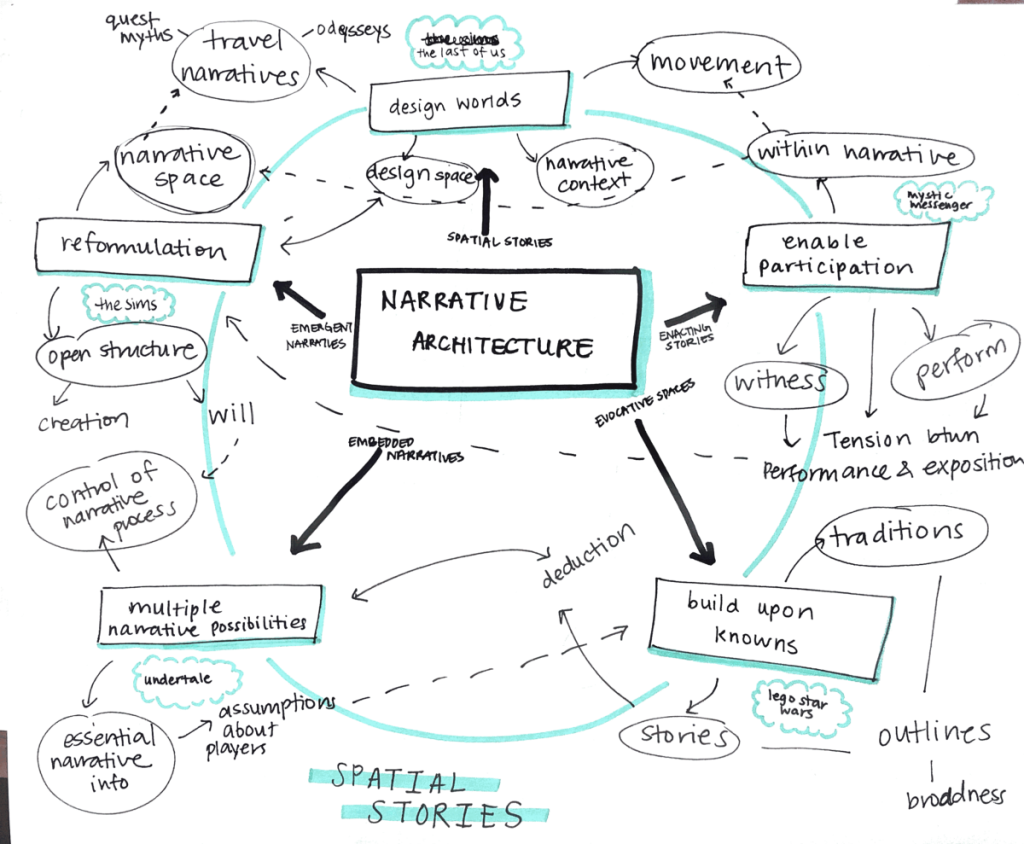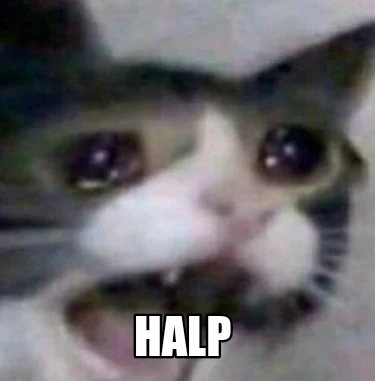[Hey love, there will be some spoilers from here on. If you haven’t played non-binary yet, you can find it for free here].
Good morning animals of the pack, this is QueerWolf writing to you. We’re on our second devlog, and this time around we’ll be looking at narrative design (big words here today for little ones like us). Shall we get started?
Narrative design and not just “narrative”
Yes: in non-binary the textual part takes up a good part of the game.
But a video game is not a novel and its narrative is something extended, weaving in every element: the text is fueled by the graphics that reinforce the meaning of the gameplay that is enriched by the music that blends into the words used and so on. They are not separate elements but a web that is made strong by its connections.
Those who write fiction know that a novel is like a marathon: it requires stamina, but its length allows you to shoulder the burden of a few mistakes.
A short story, on the other hand, is like gambling it all on a lap-a wrong step and you’re doomed.
non-binary was designed as a short story, and so it had to be perfect (spoiler: we couldn’t do it).
We sat down one evening at Ascari’s house aware of this ( the support of Melina, the dogga of chez Ascari, was central). Each brought their skills to the table to mix them, question them, turn them over to decide the main thing: the theme.

The theme
When I write fiction everything starts with the theme. I have to figure out what I want to talk about, reduce that concept to a minimum of one or two words. Figure out why it’s important for me to talk about it, and finally how to do it (spoiler: if you want to fully understand the nature of a theme, watch all the runways of Drag Race. I learned more from drag than from writing classes).
We started with the what. We set out to discuss the limitations of the first version of the game (the GGJ one). We dropped the frustration, which was central to that version, and brought language to the center.
We have grown up and live in a world where language is lacking and therefore does not allow us to know that we exist, to understand that what we feel is okay. To do this, it was obvious to delimit the perimeter of play around the stage of self-discovery, prior to actually seeing ourselves.
After three hours we got to the goal: What did we want to talk about? About language. Why? Because its absence is a problem. How? By focusing on a path of recreating and reappropriating vocabulary. Bingo.
Narration and graphics.
In the GGJ version we relied on social stereotyping to make the player recognize something gendered in the blue and in the pink. Now, however, we needed to do something more to the point.
We came to the table knowing what ending we wanted. And to make that ending strong we needed everything leading up to it to be binary in an impeccable way. We had already chosen to accumulate the words on the side, and so coloring them in allowed us to reinforce the value of pink and blue. Coloring the words in the texts emphasized it, helping to connect text and “wall of text” (literally).
Thematic bullets reinforced this: each bullet captures an element of the main character’s story. Some things are easy to recognize (the scissors) others a little less so (did we mention we need graphics?).
That’s when we take another step back: a menu that starts from a neutral point, that puts white at the center of everything to express total potentiality, something that is not yet socially conditioned, and little balls upon little balls that fall because we are all little balls until a doctor comes along and says, “Uh, you have a pussy, you’re female and your only purpose is to find objector doctors and give birth in pain.”
And so: a menu in black and white and not much black, a long game phase where you get thrown out on the street right away, only yellow between pinks and blues, a finale where you finally get to show who you are. Protected by your safety, by your relationships (Laura or Bunny), by the community (the other non-conforming shapes). A shield we’d like to have in the real world too, because in the end these things always hurt anyway.

Narration and texts
The texts in the GGJ version were quite “over the top”: they led to borderline situations. It was a practical solution for lack of time (and a bias of mine), but not particularly useful. If a story focuses on institutionalized discrimination but shows only the most extreme behaviors, we will all end up not feeling part of the problem, we will absolve ourselves. Luca’s father and brother in the first version humiliate him at the dinner table: these things happen, but a queerphobic (and misogynistic, racist, ableist) world stands mostly because of those who remain silent, those like Omar who think they are doing our good by continuing to ask us not to be ourselves.
Hence, the first problem of redaction. A more minimal perspective works and takes value if small gestures take on a strong meaning. For this to happen, the best solution is to focus on the relationships between characters. But in order for those who play to feel connected to them, you need some space, that modicum of story that makes it clear that yes, that relationship matters. And I had (and still have) the fear that too much text is boring.
Then when we introduced the mechanics of textual choice, this topic became fundamental: a choice takes value from context, and the context has to be definite, clear.
The player must have the opportunity to express themselves through choices, but if the context is not important, that expression is meaningless. And not only that: the player must feel how important Chloe is to Elisa, or walking away from her will mean nothing, it will just be a click on the keyboard.
Obvious consequence: relationships ended up at the center of the story, and relationships means characters, and it was necessary to create deep characters. Time allotted: three weeks to get everything done (because after that: revision, proofreading, input into Ink, translation). Halp.

Bonus in all this: we decided it was important to make the two stories connect. And Luca and Elisa had to be very different, lest someone unsuspecting might think that being nonbinary is something that only affects a very specific type of person.
Gathering testimonies and experiences (people who talked to us: you’ll never know how grateful we are) was crucial to figuring out what aspects to put the focus on, how to characterize Luca, Elisa, but also Laura, Omar, Chloe, poor Marika or Lorenzo.
We had to show that you can also be the most aware person of the dynamics of patriarchy in the world (Elisa) but you can still end up in a relationship that does not allow you to be yourself. That conversely you can be a nanny with the activist instincts of a dead hamster (Luca) and still find your way. And that either way you can’t come up with it on your own.
We had decided together that we wanted a positive story, always, because we are tired of stories that are based on pain. That’s also why it was important to focus on something that is talked about very little, which is gender euphoria. When we talk about trans/enby stories it seems that the drama of dysphoria is at the center of every life, that you are trans/enby only because of dysphoria. But, no: euphoria is a firework, it had to be highlighted (and Ascari was obviously so happy about that).
I come back for a moment on choices again. The choices you can’t make are also very important. When Jay streamed the game a few days ago, at one point during Elisa’s third act they wanted to give Luca their support. The problem is that at that point Elisa is in complete denial. It’s a pattern we repeatedly heard in the chats we had during the rewriting phase (and which I also saw on myself): there often comes a time when you look down on other non-cis people because you’re afraid of what you can see in yourself. Elisa will later admit it: she couldn’t accept helping Luca because they couldn’t accept themselves. One of the first lessons learned from a giant like Emily Short was: when you create a game, the choices you give matter, but the choices you don’t give matter even more.
With all this stuff in hand, we finally knew what to tell.
Conclusions
The more we think about the games we have loved, the ones we continue to take as models in here, the more we realize that an overarching view of the narrative is a central element in the construction of those titles.
But it is a super-complex thing. Super. Already Emily Short’s blog can show in its endless expanse of posts and cross-references how open-ended and in-the-making the topic is. And this complexity is a beautiful thing: to insert oneself into a debate means being able to experiment, to even screw up to find new limits or break boundaries.
A personal comment is: if you’re reading this and have so far written “only” fiction, try diving in. Join a Game Jam, find friends to try it with. Yielding agency over narrative may seem like a hard and scary thing to you, but I assure you it’s a blast: there’s no finer thing than writing a story with someone you haven’t met yet.
